The Fokker F.II was the first of a long series of commercial aircraft from the Fokker Aircraft Company, flying in 1919. In a biplane age, it presented a distinct clean, high-wing monoplane style that sold successfully across Europe and North America during the development of commercial passenger-carrying aviation.
The Fokker F.II was a single engined high-wing cantilever monoplane with a design lineage that went back to designer Reinhold Platz's Dr.I triplane, via the biplane D.VII and monoplane D.VIII fighters and his unflown F.I civil design. The Dr.I was the first aircraft to use the thick high lift/drag airfoils that enabled high climb rates and also allowed internal wing bracing. Hence the triplane wing needed no external wire bracing and its monoplane successors, apart from attachments to the fuselage were simple cantilever structures.
The F.II had other characteristic early-Fokker design features: a wing constructed of wood, fully skinned in plywood, with ailerons extending beyond the wingtips and a deep sided square section fuselage of welded steel tube covered in fabric which provided enough directional stability that no vertical fin was fitted. The F.II had a fixed undercarriage, the main units of which were joined by a cross-axle.
There was enclosed accommodation for four passengers; a fifth could travel alongside the pilot in his unenclosed cockpit, in a seat originally intended for a mechanic or navigator.
The prototype F.II, known by the company designation V.45, was constructed at the Fokker factory in Schwerin, Germany, and made its first flight there in October 1919. When Anthony Fokker decided to relocate the firm to the Netherlands, the V.45 was illegally flown across the border on 20 March 1920. Even after this, perhaps another three examples were built at Schwerin before production shifted to Veere. The prototype was powered by a 138 kW (185 hp) BMW IIIa. This proved to have cooling problems, and after an experiment with a 133 kW (178 hp) Mercedes motor, KLM who took this machine as one of two they ordered fitted it with a 179 kW (240 hp) Armstrong Siddeley Puma. Their second F.II was similarly re-engined.
In Germany, however, the technical manager of Deutsche Aero Lloyd, Karl Grulich arranged to build the type under licence for the airline, making a few modifications of his own to the design. These included strengthened landing gear, a redesigned cockpit, and redesigned trapezoidal cabin windows. At least 20, the great majority of F.IIs, were assembled by Deutsche Aero Lloyd at Staaken, Berlin. They built the fuselages there, but the wings were built by Albatros and were then supplied to the airline for final assembly. These rather heavier aircraft were powered by 172 kW (230 hp) BMW IV (and later 239 kW/320 hp BMW Va) motors.
KLM operated two F.IIs between 1920 and 1927, which were then sold to SABENA who used them on their Brussels-Antwerp route. The machines that Fokker had built in Germany were bought by Deutsche Luftreederei and registered in the Free City of Danzig. Deutsche Aero Lloyd's aircraft were used right up until the time the airline was absorbed by Deutsche Lufthansa in 1926, at which point ten machines remained. These were put to use on regional routes linking Cologne with Aachen, Essen, Krefeld, and Mülheim until 1934.
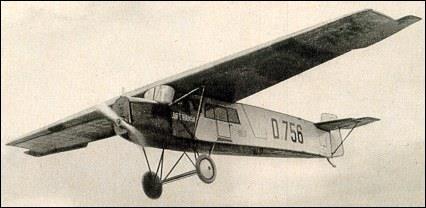
The first commercial design by Reinhold Platz was the Fokker F.I, a parasol monoplane with open cockpits for pilot and passengers. Realising the need for better passenger accommodation, Platz abandoned development of the F.I and designed instead the F.ll prototype. Like the F.I (V 44), the F.ll (V 45) was built at the Fokker works at Schwerin in Germany, making its first flight in October 1919 and receiving the German civil registration D-57. The decision having been made by Fokker to transfer his activities to the Netherlands, the F.ll prototype was flown out of Germany illegally by Bernard de Waal on 20 March 1920.
The F.ll proved to be one of the first practical passenger transport aircraft in the world and some 30 were built, most being constructed under licence by Grulich in Germany, but several being produced at Netherlands Aircraft Factories in north Amsterdam and at Fokker's new Veere factory. It is believed also that three series machines were completed at Schwerin.
The thick-section cantilever wooden wing, intended originally for the F.I, was bolted to the top of the F.II's fuselage, which was of rectangular section and tapered in width to the strut-braced horizontal tailplane. There was no fixed fin and the rudder was of relatively small dimensions. Four passengers were accommodated in a cabin beneath the wing, while the pilot and a fifth passenger were located in an open cockpit immediately forward of the cabin. The landing gear of the F.ll was of cross-axle type with rubber-cord shock absorbers.
The Fokker-Grulich F.ll, of which at least 19 were built, had an improved cockpit layout, redesigned cabin windows and strengthened landing gear. Ing Karl Grulich was technical manager of Deutsche Aero Lloyd (D.A.L.) and his version of the F.ll was flown by that airline. The wings of the Grulich F.ll were built by Albatros and the fuselages by D.A.L., who also carried out final assembly work.
Veere- and Schwerin-built F.IIs had BMW IlIa engines, but the Grulich versions had 186kW BMW IVs. Most of the Grulich aircraft were re-engined subsequently with the 239kW BMW Va and given the new designation F.llb.
The three Schwerin-built F.ll series aircraft were registered in the Free City of Danzig and used by the Deutsche Luftreederei airline. Dutch-built F.lls flew from 1920 to 1927 with the national airline KLM and two were sold to the Belgian airline SABENA for a service between Brussels and Antwerp. One Dutch-built F.ll had a 179kW Armstrong Siddeley Puma engine and one was flown briefly with a BMW IV.
Longest-lived were the Fokker-Grulich F.Ilbs. Taken over with some F.lls by the newly-formed Deutsche Lufthansa in 1926, 10 still remained in service on feeder routes linking Cologne with Aachen, Essen, Krefeld and Mulheim in the Ruhr in 1934.

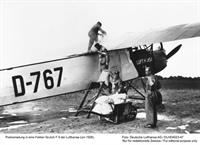


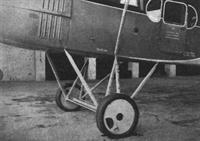
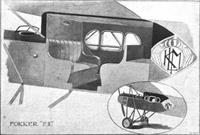
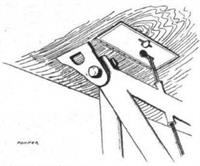

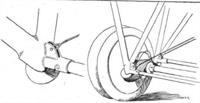
| Type |
2 + 4 seat airliner |
| Engine |
1 BMW IIIa |
| Dimensions |
Length 11,65 m, height 3,2 m, span 16,1 m, wing area 38,20 m2 |
| Weights |
Empty 1200 kg, take-off weight 1900 kg |
| Performance |
Max. speed 150 km/h, cruising speed 120 km/h, range 1200 km |


